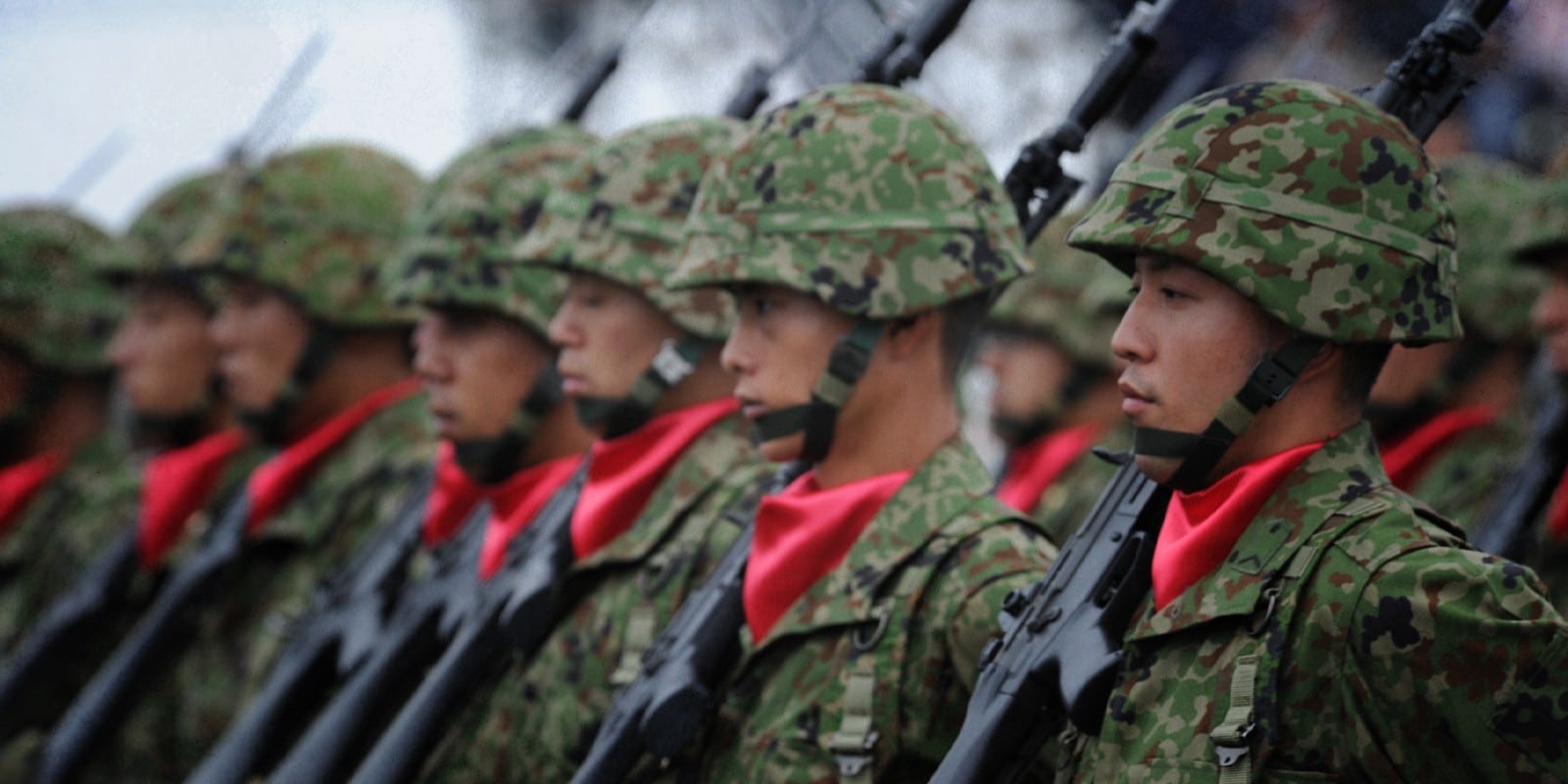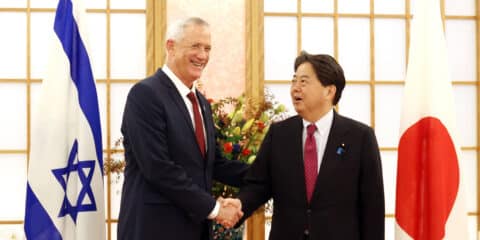Japan’s steady build-up of its substantial military power is based on a realistic view of meeting current security challenges, especially those presented by China.
Japanese Defense Minister Nobuo Kishi spoke with his Chinese counterpart Wei Fenghe on December 28, agreeing to set up a military hotline next year, Japan’s government spokesperson said last week.
According to Reuters, the Japanese defense chief voiced the importance of stability in the Taiwan strait, Chief Cabinet Secretary Hirokazu Matsuno said.
Japan published its Annual Defense White Paper in July 2021, marked by much greater strategic clarity than in the past about its regional role.
This document includes detailed assessments of the country’s strategic situation and challenges and the means to confront them. Three points should be highlighted regarding the Paper and its broader context.
First, following previous iterations, the Paper emphasizes that alongside the alliance with the United States, there is a need for continued cooperation among stakeholders in the wider Pacific to make the region prosperous and developed. Cooperation is critical given the intense competition between the United States and China.
Second, the Paper is accompanied by a much more assured, at times assertive, set of declarations about the country’s security stance vis-à-vis China. This has been initiated by the ruling coalition led by the Liberal-Democratic Party.
Third, the most significant change from previous Papers is a much more explicit stance of support for Taiwan in the face of its Chinese adversary.
What lies behind these developments?
While North Korea and Russia continue to be security challenges for Japan, the most crucial issues center on China as a security threat and trade partner. The importance of China as a security threat has emerged at the same time as there is much greater cautiousness, at times suspicion, of America’s genuine commitment to Japan as to Asia more generally.
This wariness, of course, does not mean changing the terms of the US-Japan alliance. On the contrary, the new one trillion-yen commitment for US bases (over five years) and support for the Quadrilateral Security Dialogue (Quad) group of countries (US, Japan, Australia, and India) attest to Japan’s commitment to the US. But there are calls in Tokyo to be aware of America’s inward-looking orientation, political polarization, and fatigue from participation in international conflicts.
Japan’s expanding regional security role is best understood as a reaction to the tilting of the military balance in China’s favor. China’s continued militarization has been accompanied by regular incursions into and along the sea and air spaces of Taiwan, Indonesia, Malaysia, and the Philippines.
Chinese leaders claim the moves are protecting its national interests. The construction of military bases on islands in contested sea areas and the unilateral creation of an air defense identification zone over the disputed East China Sea are part of this militarization. China has also been testing Japan’s readiness through incursions into neighboring air and sea corridors and the area of the contested Senkaku/Diaoyu islands. In 2020, a record number of such incursions took place.
In the face of Chinese actions, Japanese leaders have broken with the past and taken a much more assertive stance. Thus, statements by top Japanese leaders, including then Prime Minister Yoshihide Suga and his deputy, Taro Aso, named China as a potential security threat by calling it out for its moves in the territories near Japan.
Moreover, Suga’s predecessor, Shinzo Abe, explicitly stated that “a Taiwan emergency is a Japanese emergency.” Abe played a pivotal role in reorienting Japan’s strategic priorities and policies by persuading like-minded countries to form a united response to Beijing’s assertive postures. Earlier this month, Abe stated that an attack on US ships in the Taiwan arena would trigger the collective security clause of the alliance and could lead to Japan participating in hostilities.
The past decade has witnessed a flurry of activity in the security and military establishments: the founding of a national security council and formulation of a national security strategy, recognition of participation in collective defense and new laws governing Japan’s armed forces, as well as the strengthening of the coast guard, navy and air force. Japan has also acquired new weaponry, including ships and airplanes, submarines, anti-rocket systems, and converted a helicopter carrier into its first post-World War Two aircraft carrier.
Furthermore, senior policymakers have begun to publicly debate the need for missiles designed for preemptive strikes against enemy bases. No less important, Japan is steadily cultivating bilateral security ties (including regular dialogue and joint exercises) with many Southeast Asian countries such as Vietnam, Singapore, the Philippines, and Indonesia.
Following the publication of the White Paper, the new government of Kishida decided to approve an unprecedented supplementary defense budget of $6.8 billion, increasing the defense budget by an additional 13 percent which will now account for 1.3 percent of Japan’s GDP.
These military developments are a continuation of previous policy whereby diplomatic and economic means were implemented to deal with Chinese threats. Along these lines, Japanese leaders and the media have begun to discuss national security issues and those related to the economy. A new economic unit was added to the National Security Council.
Parallel to security dialogue among Southeast Asian countries, aid in equipment and training local coast guards, and joint military exercises, Japan also implemented policies encouraging economic cooperation and investment. This policy created the Arc of Freedom and Prosperity for the Pacific from north to south. This policy emphasizes values such as freedom, democracy, fundamental human rights, the rule of law, and the market economy as crucial features to be promoted in the wider Pacific.
This regional policy is expressed in programs such as the Partnership for Quality Infrastructure that involves investing $110 billion in developing local industries, infrastructure investment, the environment, and food safety. Its broader aim is to create an alternative to China’s Belt and Road Initiative by combining government and private investment.
In addition, China seeks to join the Comprehensive and Progressive Agreement for Trans-Pacific Partnership, which was modified and renamed after the US left the free trade agreement (formerly named the Trans-Pacific Partnership).
The most critical change in the current security policy is regarding Taiwan. For example, Japan’s most senior leaders have consistently made strong public declarations of support for Taiwan’s continued existence as a democratic country and maintaining the Taiwan Straits as an open corridor.
Among the most noteworthy of these leaders have been Kishi, who directly addressed the importance of peace and stability of Taiwan for Japan, and Aso, who underscored his country’s readiness to join US forces in the event of a Chinese invasion of Taiwan.
More recently, Prime Minister Fumio Kishida echoed this tough stance yet again. Furthermore, Japan’s call for Taiwan to join the World Health Organization has expressed this more forceful shift. Moreover, Japan also donated coronavirus vaccines to Taiwan, which had difficulties obtaining them due to international pressure exerted by China. In addition, there is an open dialogue between the Liberal Democratic Party and the ruling party of Taiwan, the Democratic Progressive Party.
In conclusion, Japan’s steady build-up of its substantial military power is based on a realistic view of meeting current security challenges, especially those presented by China.
Moreover, the wider public has gradually accepted this realist view instead of the prevalent pacifist view, which was dominant in the past.
JISS Policy Papers are published through the generosity of the Greg Rosshandler Family.
Photo: JGSDF






 - בניית אתרים
- בניית אתרים